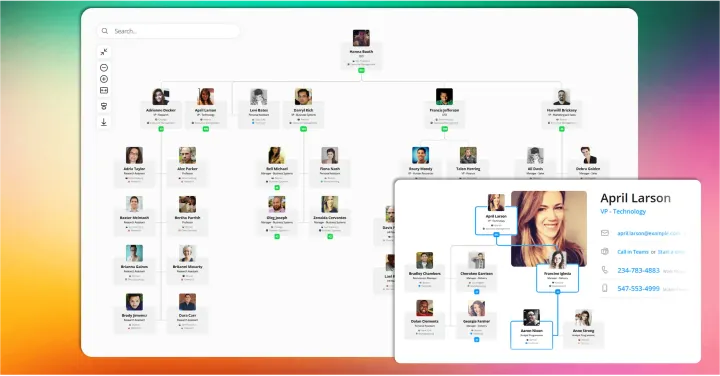When to Use a Functional Organizational Structure
Whether you’re just starting out or have been in business for years, a functional organizational structure can help you maximize efficiency while minimizing costs.

The success of any business lies in its structure. Having a good organizational structure is essential for any business to function optimally.
A functional organizational structure is one of the most common types of organizational structures and has many advantages that make it an ideal choice for businesses of all sizes.
Whether you’re just starting out or have been in business for years, a functional organizational structure can help you maximize efficiency while minimizing costs.
What is a Functional Organizational Structure?
A functional organizational structure is an arrangement of responsibilities within a company. It divides employees into different departments based on their skills and activities.
For example, an accounting firm might have separate departments for auditing, tax preparation, payroll services, etc., while a manufacturing company may have departments for production, sales, marketing, etc. The idea behind this type of structure is that each department has its own distinct purpose and goals that contribute to the overall success of the business.
In a functional organization structure, each department has its own distinct leader who reports to the head of the organization (usually the CEO). This leader is responsible for setting goals and objectives for their department as well as managing all employees within it. Each department also has its own budget which allows them to make decisions about how they want to allocate resources.
This type of structure allows companies to be more efficient by focusing their resources on specific areas of expertise and allowing each department to specialize in what they do best.
The Advantages of a Functional Organizational Structure
A functional organizational structure offers several advantages over other types of structures which makes it an ideal choice for businesses both large and small alike who want maximum efficiency. Let’s explore the advantages of this type of structure in more detail.
Flexibility and Adaptability
The main advantage of a functional organizational structure is its flexibility and adaptability.
Since it is based on departments or functions, it can easily be modified or adapted to changing needs and circumstances without major restructuring efforts. This makes it perfect for dynamic businesses that need to stay agile in order to remain competitive in their industry. It also allows businesses to quickly respond to changes in customer demands, market conditions, technology, etc., which can be extremely beneficial when competing against larger organizations with more resources at their disposal.
Efficiency
Another key advantage of a functional organizational structure is its focus on efficiency.
By organizing your business into departments based on different functions, such as sales, marketing, finance, etc., you can ensure that each department has the exact resources and personnel needed to efficiently perform their tasks. This helps reduce costs since employees don’t have to waste time learning new skills or trying to figure out how best to use limited resources. Additionally, having each department focus on one specific task reduces redundancy and ensures that everyone is working together towards a common goal instead of duplicating efforts or working at cross-purposes with one another.
Resource Allocation
Finally, a functional organizational structure also makes resource allocation easier since each department has access to the exact resources they need when they need them.
This eliminates the need for managers or supervisors having to micromanage employees by ensuring they have access only to what they need at the time they need it without wasting valuable resources on tasks that aren’t necessary at the moment. This ensures that your business runs as efficiently as possible while still being able to adjust quickly if needed due to external factors such as changes in customer demand or market conditions.
The Disadvantages of a Functional Organizational Structure
The functional organization structure provides many advantages but also has some drawbacks that should be taken into consideration when deciding on an organizational model for your business or organization. Let’s have a look the disadvantages of this type of structure in more detail.
Isolation from Other Departments
One of the most significant disadvantages of a functional organizational structure is the potential for isolation from other departments.
When employees are divided according to their areas of expertise, they may not have any interaction with colleagues outside their own department. This can lead to limited collaboration, a lack of team building, and an overall disconnect between departments. It could also result in a lack of understanding when it comes to how each department works together to reach shared goals.
Difficulty Adapting to Change
Another potential downside of a functional organizational structure is its difficulty adapting to change.
Because each department operates separately, making changes or implementing new processes can be difficult and time-consuming since each department must be consulted individually before anything can be implemented across the board. Additionally, if teams are too focused on individual tasks rather than working together as a whole, they may struggle when faced with unexpected challenges or changes in direction from management.
Lack of Innovation
Finally, employee creativity and innovation may suffer in a functional organizational structure due to its rigid nature and focus on specialization over collaboration.
Without exposure to different perspectives or ideas from other departments, employees may become stuck in an “idea rut” where there’s no room for growth or new approaches to problem-solving and decision-making. Additionally, without access to feedback from other departments or stakeholders, teams may have difficulty identifying areas for improvement or developing creative solutions that could benefit the organization as a whole.
When To Use A Functional Organizational Structure?
There are a few different factors that go into deciding when to use a functional organizational structure.
One is the company’s growth rate.
A functional structure can be limiting if a company is growing quickly and needs to add new departments and positions. In this case, it might be necessary to switch to a divisional structure in order to keep up with the growth. Another is the culture of the company should be taken into account. A functional structure can foster silos and competition between departments, so it might not be the best choice for a company that values collaboration and innovation.
Ultimately, a functional organizational structure works best in organizations that need to specialize in certain areas but still require collaboration between departments.
For example, a tech company may need developers who specialize in coding while also needing marketers who know how to promote the product effectively. A functional organizational structure would allow each group to focus on its own unique set of tasks while still being able to collaborate with other teams when needed.
Tips for Successfully Implementing a Functional Organizational Structure
To make the most of a functional organizational structure, consider the following tips:
- Define clear roles and responsibilities: Ensure each department has a well-defined purpose, set of goals, and responsibilities.
- Establish strong leadership: Appoint experienced and competent leaders for each department who can effectively manage their teams and communicate with other departments.
- Encourage cross-functional collaboration: Foster a culture that values collaboration and open communication across departments. This can be achieved through regular meetings, team-building activities, and shared project management tools.
- Monitor and adjust: Regularly review your functional organizational structure to identify areas for improvement or necessary adjustments. Stay open to changes that will enhance efficiency and collaboration within your organization.
Conclusion
A functional organizational structure offers numerous benefits, including increased efficiency, streamlined communication, and enhanced collaboration.
By understanding its advantages and potential drawbacks, and following the tips for successful implementation, you can create a thriving business that maximizes the potential of its workforce. So, consider adopting a functional organizational structure and watch your company flourish!


